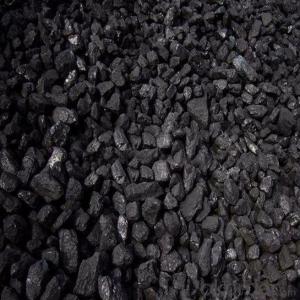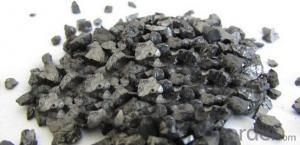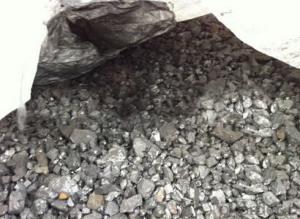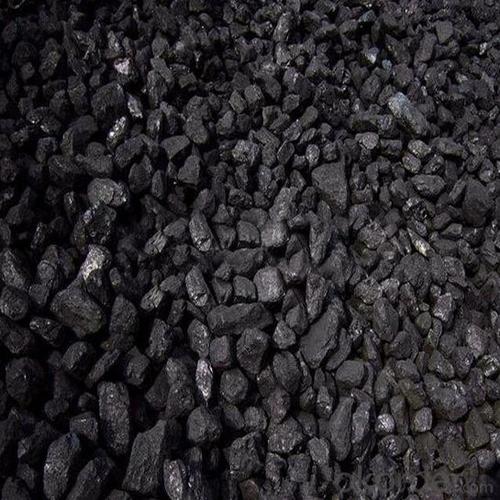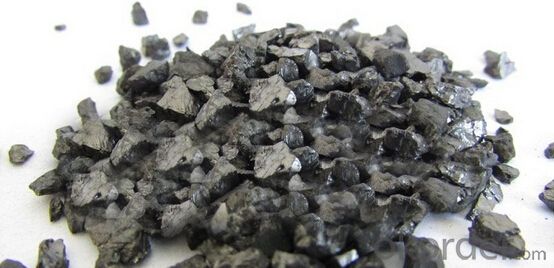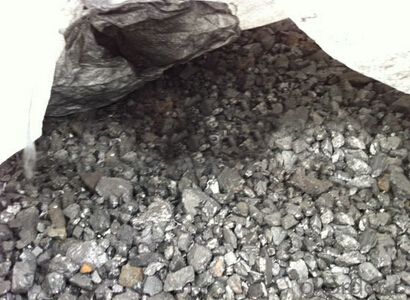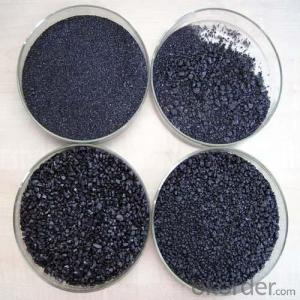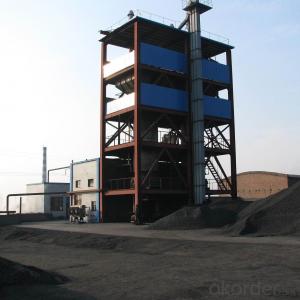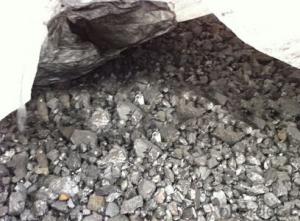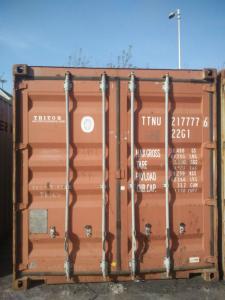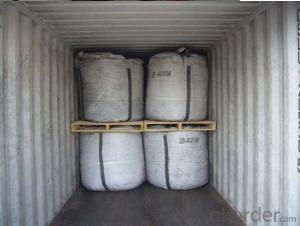95.5% Anthracite blind coal recarburizer for steelmaking
- Loading Port:
- Dalian
- Payment Terms:
- TT OR LC
- Min Order Qty:
- 10 m.t
- Supply Capability:
- 500000 m.t/month
OKorder Service Pledge
Quality Product, Order Online Tracking, Timely Delivery
OKorder Financial Service
Credit Rating, Credit Services, Credit Purchasing
You Might Also Like
Specifications of recarburizer:
- Widely used in steel-making metallurgical
- Calorific:8000-8800caloric valua
- FC min 90 95%max
- Competely grain size
Product Description:
- Fixed carbon:90%-95%
- Sulphur:0.35% max
- Volatile matter:1.58%
- Ash:8% max
- Humidity:0.8%max
- Calorific valua:8000cal/kg min 8800cal/kg max
Packaging & Shipping:
- Waterproof toon bags(without small bag inside)
- 25kg paper bag on the pallet or in 1MT big bag
- As customer require
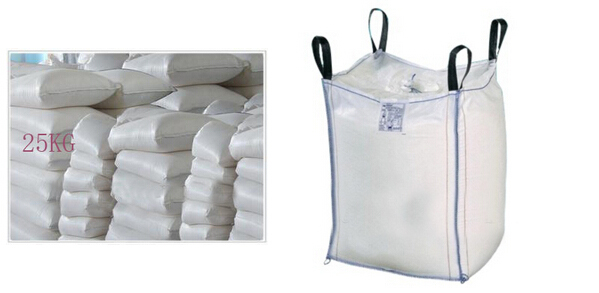
- Q: How does carbon impact the availability of natural resources?
- The availability of natural resources is significantly impacted by carbon dioxide (CO2), which is a form of carbon. When fossil fuels like coal, oil, and natural gas are burned, they release large amounts of CO2 into the atmosphere. This excessive release of CO2 is responsible for the greenhouse effect, which leads to global warming and climate change. Climate change has a major effect on natural habitats and ecosystems. It directly affects the availability of various natural resources by causing rising temperatures and changing weather patterns. For example, higher temperatures can result in the melting of glaciers and ice caps, which affects the availability of freshwater resources for human consumption and agriculture. Furthermore, carbon emissions contribute to the acidification of oceans, which harms marine life. Coral reefs, for instance, are highly sensitive to changes in water chemistry. Increased acidity due to elevated CO2 levels can bleach and eventually kill coral reefs. This not only impacts ocean biodiversity but also affects the availability of fish and other seafood resources that many communities depend on. Moreover, climate change caused by carbon emissions disrupts ecosystems and leads to the extinction or displacement of numerous plant and animal species. This has cascading effects on the availability of resources like timber, medicinal plants, and other valuable natural products sourced from forests and other ecosystems. In addition, carbon emissions contribute to air pollution, which has adverse effects on human health. High concentrations of airborne pollutants, including particulate matter, can cause respiratory diseases and other health issues. This strains healthcare systems and reduces the productivity and overall well-being of communities. To mitigate the negative impacts of carbon emissions on the availability of natural resources, it is crucial to transition to cleaner and more sustainable energy sources, such as renewable energy. This shift would reduce reliance on fossil fuels and subsequently decrease carbon emissions, thus helping preserve and protect our natural resources for future generations.
- Q: How do forests act as carbon sinks?
- Forests act as carbon sinks by absorbing carbon dioxide from the atmosphere through the process of photosynthesis. Trees and other plants take in carbon dioxide and convert it into oxygen, while storing the carbon in their trunks, branches, and roots. This stored carbon remains in the forest ecosystem, reducing the amount of greenhouse gases in the atmosphere and helping to mitigate climate change.
- Q: How about Zonta carbon technology
- The factory garbage to death, wages do not rise, but down, quarterly awards fell by more than half, production targets set very high, employees can not reach the goal, not to work overtime. This is a company's way of restricting employees to work overtime. And so on, the target production has been added, so never meet the requirements, overtime do not think. A large piece of employee turnover now
- Q: How does carbon impact soil health?
- Carbon plays a crucial role in maintaining and improving soil health. It is a key component of organic matter, which is essential for fertile and productive soils. When carbon is added to the soil through the decomposition of plant and animal residues, it helps to improve the soil structure, water holding capacity, and nutrient availability. One of the primary ways carbon impacts soil health is through its ability to enhance soil structure. Carbon binds with soil particles to form aggregates, which create pore spaces in the soil. These pore spaces allow for better aeration, water infiltration, and root penetration. Good soil structure promotes the growth of beneficial soil organisms like earthworms and microorganisms, which further contribute to soil health. Carbon also plays a crucial role in improving the water holding capacity of soils. Organic matter, rich in carbon, acts as a sponge by holding moisture and preventing water runoff. This is particularly important in arid or drought-prone regions where water scarcity is a concern. Improved water retention in soils not only helps plants withstand dry periods but also reduces erosion and nutrient leaching. Furthermore, carbon is a vital nutrient for soil microbes. Microorganisms, such as bacteria and fungi, break down organic matter, releasing nutrients that are essential for plant growth. Carbon-rich soils provide a favorable environment for these microorganisms to thrive, leading to increased nutrient availability for plants. Additionally, as microorganisms decompose organic matter, they release beneficial substances like enzymes and hormones that further support plant growth and overall soil health. In conclusion, carbon greatly impacts soil health by improving soil structure, enhancing water holding capacity, and promoting nutrient availability. Therefore, managing and increasing carbon content in soils through practices like adding organic amendments, cover cropping, and reducing tillage can greatly benefit agricultural productivity and sustainability.
- Q: How are fossil fuels formed from carbon?
- Fossil fuels are formed from carbon through a natural process that takes millions of years. The process begins with the remains of plants and animals that lived millions of years ago. These remains, which contain carbon, get buried under layers of sediment in oceans, swamps, and other bodies of water. Over time, the pressure from the layers of sediment and the heat from the Earth's crust cause a process called diagenesis to occur. During diagenesis, the organic matter in the remains undergoes chemical changes, transforming it into a substance known as kerogen. As more layers of sediment continue to accumulate, the temperature and pressure increase further. Eventually, the kerogen undergoes a process called catagenesis, where it is heated to even higher temperatures. This causes the kerogen to break down and transform into liquid and gaseous hydrocarbons, which are the main components of fossil fuels. The liquid hydrocarbons form what is known as crude oil or petroleum, while the gaseous hydrocarbons form natural gas. Both of these fossil fuels can be extracted from the Earth's crust through drilling. In summary, fossil fuels are formed from carbon through a complex and lengthy process involving the burial, pressure, and heat of organic matter over millions of years. This process transforms the carbon-rich remains into hydrocarbons, which become the valuable resources that we use as fossil fuels today.
- Q: What is carbon steel, carbon manganese steel?
- Carbon manganese steel is a high-quality carbon structural steel in the higher manganese content of carbon steel, manganese elements are generally marked in the rear, such as 20Mn, 40Mn and so on
- Q: How do carbon emissions contribute to extreme weather events?
- Extreme weather events are influenced by carbon emissions, which contribute to climate change. When greenhouse gases like carbon dioxide are released into the atmosphere, they trap heat from the sun and cause the Earth's average temperature to rise. Human activities such as burning fossil fuels, deforestation, and industrial processes are major drivers of this phenomenon known as global warming. As the planet warms, weather patterns become disrupted, leading to an increase in extreme weather events. Carbon emissions play a role in this process in several ways: 1. Heatwaves: Higher carbon emissions result in increased temperatures, leading to more frequent and intense heatwaves. These prolonged periods of extreme heat pose risks to human health, agriculture, and ecosystems. 2. Hurricanes and tropical storms: Carbon emissions cause ocean temperatures to rise, providing more energy to fuel hurricanes and tropical storms. This leads to stronger storms with higher wind speeds and heavier rainfall, causing more destruction and flooding. 3. Droughts: Climate change caused by carbon emissions can disrupt precipitation patterns, resulting in decreased rainfall and increased droughts in certain regions. These prolonged periods of water scarcity have severe impacts on agriculture, water supplies, and ecosystems. 4. Heavy rainfall and flooding: Global warming intensifies the water cycle, leading to more evaporation and moisture in the atmosphere. This results in heavier rainfall events, increasing the risk of flooding and flash floods. 5. Wildfires: Climate change, driven by rising temperatures and drier conditions, creates favorable conditions for wildfires. Carbon emissions contribute to longer and more severe fire seasons, leading to more extensive and destructive wildfires. It's important to note that while carbon emissions contribute to extreme weather events, they are not the sole cause. Natural climate variability factors like El Niño and La Niña can also influence extreme weather. However, reducing carbon emissions and transitioning to cleaner energy sources can help mitigate the impacts of climate change and prevent further exacerbation of extreme weather events.
- Q: How accurate is carbon dating?
- Carbon dating, also known as radiocarbon dating, is a widely used scientific method to determine the age of organic materials up to 50,000 years old. It is based on the principle of measuring the ratio of radioactive carbon-14 (C-14) to stable carbon-12 (C-12) in a sample. Carbon dating has proven to be a highly accurate method, with a relatively small margin of error. The accuracy of carbon dating depends on several factors, including the quality and preservation of the sample, the precision of the measurement instruments, and the understanding of the carbon cycle in the past. One of the main limitations of carbon dating is that it can only be used on organic materials that were once alive. This means that it is not applicable for dating inorganic materials such as rocks or minerals. Additionally, carbon dating is most effective for samples younger than 50,000 years old, as the amount of C-14 decreases over time, making it more challenging to measure accurately. To ensure accuracy, scientists often use multiple dating methods or cross-reference their results with other independent dating techniques. This helps to verify the reliability of carbon dating and provide a more comprehensive understanding of the age of the sample. In recent years, advancements in technology and calibration methods have further improved the accuracy of carbon dating. For instance, the use of Accelerator Mass Spectrometry (AMS) allows for smaller sample sizes and greater precision in measurements, reducing the margin of error. Calibration curves based on tree rings, known as dendrochronology, also help refine the accuracy of carbon dating. While carbon dating is a highly reliable method, it is important to acknowledge that no dating technique is perfect. There are inherent limitations and uncertainties associated with all scientific dating methods. However, with proper calibration and careful analysis, carbon dating remains one of the most accurate ways to determine the age of organic materials.
- Q: How does carbon impact the prevalence of floods?
- Carbon emissions contribute to climate change, which in turn can increase the prevalence of floods. This is because carbon dioxide and other greenhouse gases trap heat in the atmosphere, leading to global warming. As temperatures rise, more water evaporates from oceans, rivers, and other bodies of water. This increased moisture in the air can result in heavier rainfall and more intense storms, leading to a higher risk of flooding. Additionally, global warming also contributes to the melting of glaciers and ice caps, causing sea levels to rise and further exacerbating flood events in coastal areas.
- Q: What are the main factors that affect the strength of carbon fibers?
- The main factors affecting the strength of carbon fibers arePAN precursorPreoxidationcarbonizationGraphitizationsurface treatmentCoilingcarbon fibre
Send your message to us
95.5% Anthracite blind coal recarburizer for steelmaking
- Loading Port:
- Dalian
- Payment Terms:
- TT OR LC
- Min Order Qty:
- 10 m.t
- Supply Capability:
- 500000 m.t/month
OKorder Service Pledge
Quality Product, Order Online Tracking, Timely Delivery
OKorder Financial Service
Credit Rating, Credit Services, Credit Purchasing
Similar products
Hot products
Hot Searches
